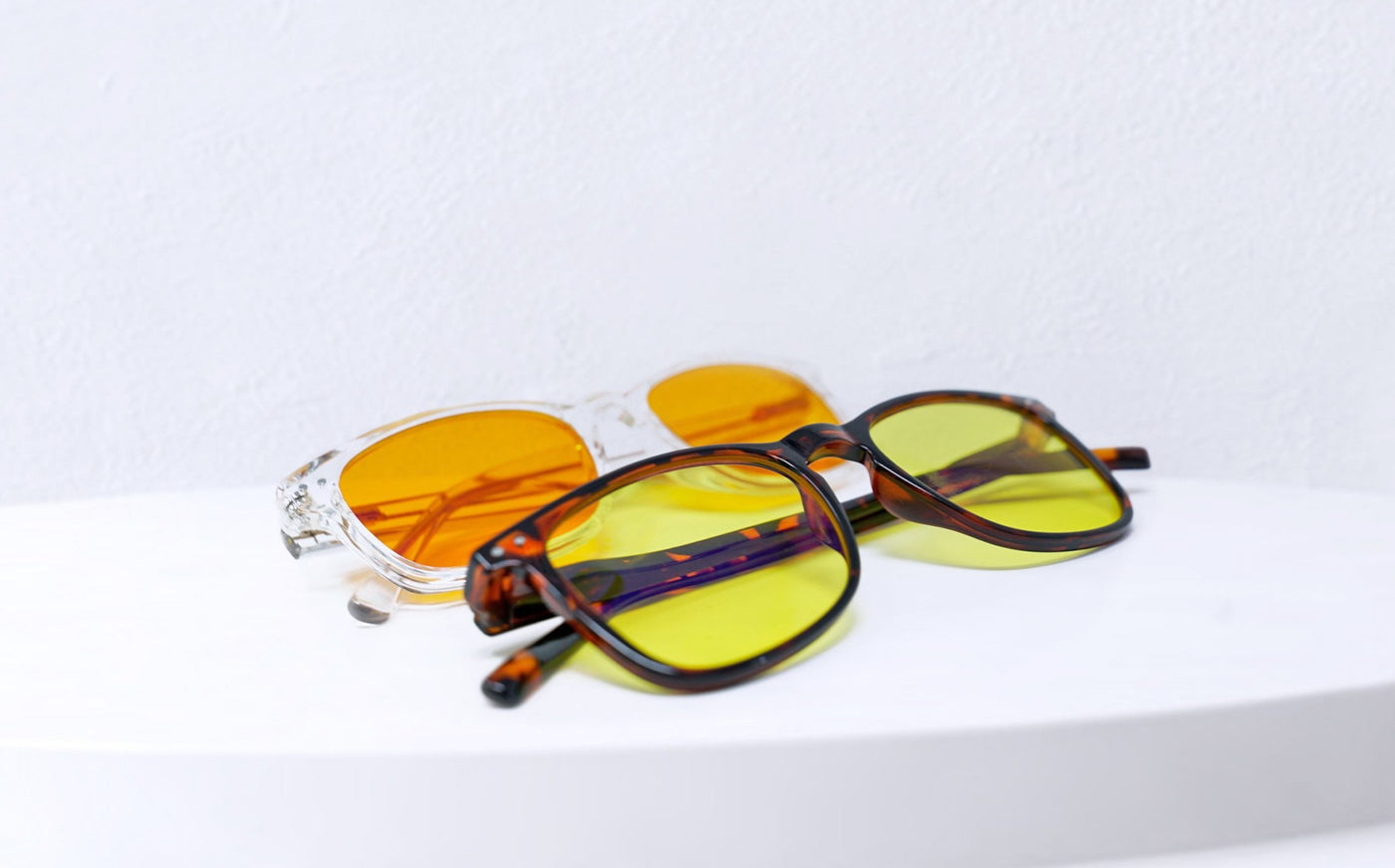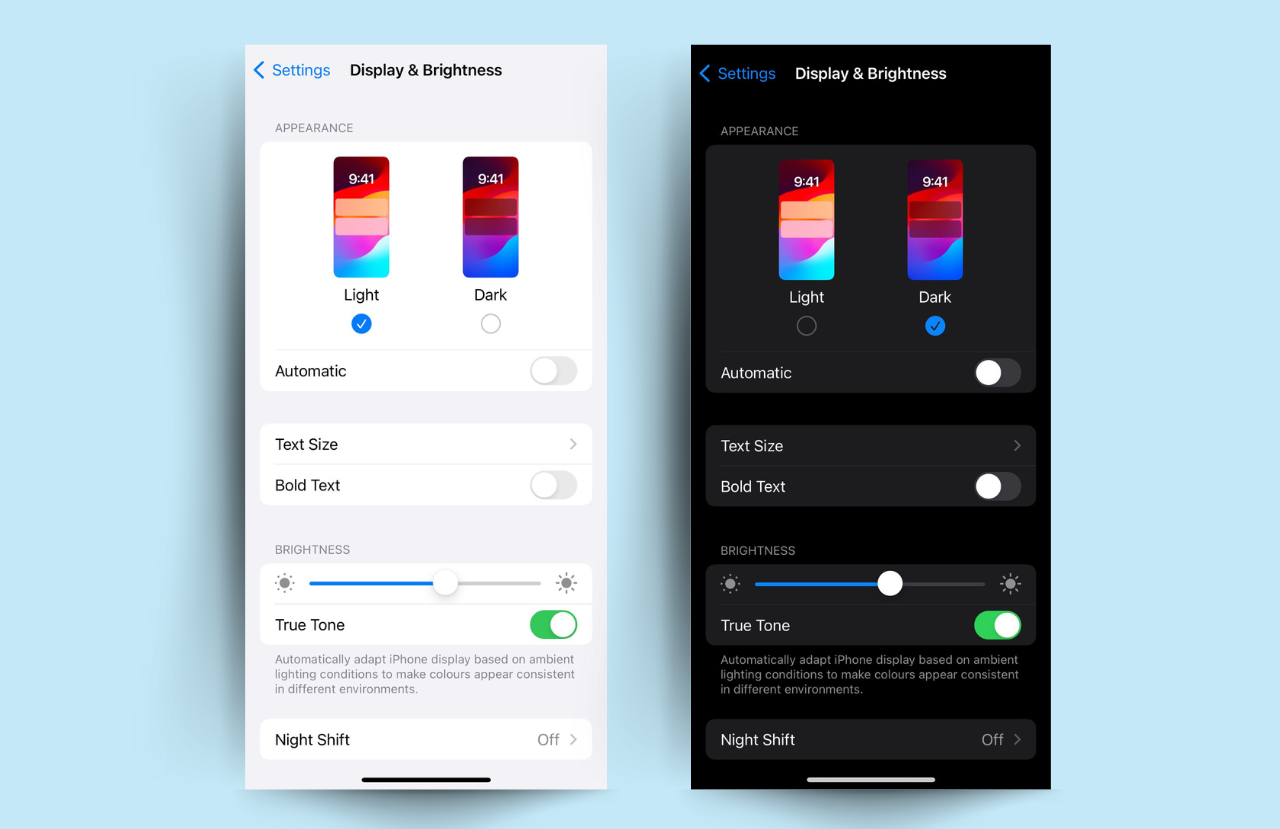You've probably seen many different types of blue blocking glasses online.
Some examples are blue blocking glasses with a yellow or red tint, stylish models, fit over models, and many other types.
We've had some questions about the precise differences between these glasses so thought it worthwhile explaining through the differences a little more here.
Finding the perfect blue light blocking glasses for your unique circumstances: from daytime screen protection to late-night remedy
We know how you feel about the wide selection of blue light blocking glasses...
We really do!
Let me explain why:
We've got the exact same feeling when we enter a hardware store. That shop contains so many options that it's hard to figure out what product you need.
You see, we're not building specialists so typically ask the employees of that shop to help. We then follow these employees' instructions to the letter - and sometimes still end up with the wrong product that's not fit for purpose.
Blue blocking glasses are somewhat the same - if you're not an insider, it's hard to grasp the benefits of different models.
So let us break that information down - you'll never go wrong with this description:
Right now there are three main types of blue light blocking glasses on the market.
These types may look the same to you, but in reality, they do have different benefits.
Before we tell you about the benefits of these different blue blocking glasses, however, we need to explain another subject first: the light in your environment. The reason for explaining that subject is that your environment's light determines what glasses you'll need.
Here we go:
So you probably already know that blue light can be bad for you
Why?
Let's consider the light your ancestors were exposed to. For hundreds of thousands of years, your ancestors rose with the sun and went to bed a couple of hours after sunset.
99% of our light exposure actually came from that sun back then.
And you may also know that sunlight emits different types of light: ultraviolet light, visible light, and infrared light.
(Both infrared and ultraviolet light is invisible to the human eye.)
Let us explain these light types:
Ultraviolet light is the light type that can give you a sunburn, visible light is made up of all the colours of the rainbow, and infrared light gives you that warm feeling when you're in the sun.
It's that's simple...
There's one caveat for you though:
Our modern indoor lighting sources have all of the infrared and ultraviolet light removed, and only emit visible light. Another problem is that some colours of that visible light spectrum are over represented: blue light is dominant in both artificial light and electronic devices.
But why should you care about that blue light?
Well, when you're exposed to blue light from sunlight, that blue light is balanced by other visible colours (red), and also by infrared and ultraviolet light. Modern electronic devices and light bulbs, however, emit lots of blue light without ever being balanced by the other types of light that the sun normally puts out.
If you're spending lots of time indoors, you'll thus automatically end up with lots of blue light exposure--unless you protect yourself.
Let us tell you why protection is necessary:
If you're being exposed to excessive blue light you will:
- damage your eyes and get eye strain.[1; 2; 5]
- stimulate wakefulness - which unfortunately comes at the cost of anxiety.[3; 4]
- gain weight (or worse: fat).[6; 7]
- ruin your sleep if you're exposed at nighttime.[8]
So what's a simple solution?
Blue blocking glasses...
Let me tell you why:
With blue blocking glasses you can get the right amount of blue light at the right time of the day
Here's what you're after when wearing blue blocking glasses:
- During the daytime, you'll want roughly equal amounts of blue light and red light. At nighttime (after sunset), you'll want to eliminate blue light as much as possible.
- When blue light enters your eyes after nighttime, that light inhibits a hormone called "melatonin" in your brain. You need melatonin for deep sleep and to stay asleep, and thus block all blue light at nighttime.
Some blue light during the day is therefore great - but lots of blue light is damaging - at nighttime, all blue light exposure is damaging.
Now that you understand what amount of blue light you need at what time of the day, we will categorise these glasses from least protective to most protective.
The first category: daytime blue blocking glasses - the least protective glasses
If you're spending all day in front of a computer or projector screen, then Daytime Blue Light Blocking (Computer) glasses are perfect for you:


The benefits of these glasses are that they filter out 50% of all blue light coming from LED and fluorescent light bulbs, smartphones, computer screens, and projector screens.
Daytime glasses, for example, make you much less tired when looking at a computer screen all day. You'll only need to wear these glasses if you're inside a building though - ditch them when you're outside.
The second category of blue blocking glasses is intended for evening use, offering high protection
We will give you three examples of highly protective glasses below. The first example is wrap around amber blue blocking glasses:

These amber-tinted glasses block 100% of blue light, which entails that your brain will be producing melatonin a few minutes after you start wearing them.
Remember: more melatonin equals better sleep quality.
The blue blocking glasses listed above are perfect if you watch television or look at a computer screen during the evening. If you have your lights on at night, we recommend wearing these glasses.
The wrap around fit allows all light being blocked from the sides and the top to ensure no light leaks into the eyes.
Secondly, there are blue blocking fitover glasses:
These glasses have almost the same health benefits as the previous orange model, but this model fits over your existing prescription glasses.
In fact, the frame has a width of 140 millimetres and fits over almost 100% of regular prescription glasses. These fit-over glasses are perfect if you love to read in the evening.
Another benefit of this wraparound model is that light is less prone to leaking in around the edges of the model. Light that's leaking around the edges can inhibit melatonin production somewhat, if it hits your eyes.
Thirdly, stylish models also exist within this high-protection category. An example:
Stylish blue blocking glasses are amazing if you like to party at night while still looking great.
Some people are very self-conscious when wearing one of the earlier types of models described outside their homes. If that's the case for you, we highly recommend a pair of stylish blue blocking glasses: others will even compliment you on them!
But you may think: "what if just high protection is not good enough for me...?"
What if you're an insomniac who desperately needs the best possible sleep during the nighttime, or a high-performing CEO who wants to make every second of the day count?
In that case, consider:
The third category: red-tinted maximum protection blue blocking glasses

The blue blocking glasses displayed above are called blue blocking glasses nightfall, and their special feature is that they don't just block all blue light, but most green frequencies as well.
Why block green?
Well, green light that's emitted by modern electronic devices and light bulbs still has a minor impact on your melatonin levels at night.
Sure, if you wear one of our orange-tinted glasses listed above then you'll dramatically improve your melatonin levels - red just increases the effect even further.
(Disclaimer: be careful driving with these red glasses, as some people can no longer see traffic lights with them.)
The red-tinted blue blocking glasses are also offered in fit-over model so that you can combine them with prescription glasses:
So that's it... you now know the main categories and sub-types of blue blocking glasses on the market today.
So let's finish up:
Conclusion: the right fit and purpose is king
Have we given too much information above? Let us simplify the message even further:
For daytime use, if you're spending lots of time in front of screens or under artificial light, we would always recommend daytime blue blocking glasses.
For nighttime use there are five different options:
- For high protection, use orange tinted glasses. If looks are (very) important to you, use a stylish model. If you've got prescription glasses or want more protection, use a fit-over model. In other cases, use a regular model.
- For maximum protection, use the red-tinted glasses, and use a fit-over model if you wear prescription glasses
That's it!
And remember:
With blue blocking glasses, your sleep will thank you tonight - your eyes and overall health will do so 10 years even down the road.
You deserve the best!
References:
[1] Vicente-Tejedor J, Marchena M, ... Germain F. Removal of the blue component of light significantly decreases retinal damage after high intensity exposure. PLoS One. 2018 Mar 15;13(3):e0194218. doi: 10.1371/journal.pone.0194218. eCollection 2018.
[2] Tosini G, Ferguson I, Tsubota K. Effects of blue light on the circadian system and eye physiology. Mol Vis. 2016 Jan 24;22:61-72. eCollection 2016.
[3] Hatori M, Gronfier C, ... Tsubota K. Global rise of potential health hazards caused by blue light-induced circadian disruption in modern aging societies. NPJ Aging Mech Dis. 2017 Jun 16;3:9. doi: 10.1038/s41514-017-0010-2. eCollection 2017.
[4] Yuda E, Ogasawara H, Yoshida Y, Hayano J. Exposure to blue light during lunch break: effects on autonomic arousal and behavioral alertness. J Physiol Anthropol. 2017 Jul 11;36(1):30. doi: 10.1186/s40101-017-0148-4.
[5] Sheppard AL, Wolffsohn JS. Digital eye strain: prevalence, measurement and amelioration. BMJ Open Ophthalmol. 2018 Apr 16;3(1):e000146. doi: 10.1136/bmjophth-2018-000146. eCollection 2018.
[6] Cheung IN, Zee PC, ... Reid KJ. Morning and Evening Blue-Enriched Light Exposure Alters Metabolic Function in Normal Weight Adults. PLoS One. 2016 May 18;11(5):e0155601. doi: 10.1371/journal.pone.0155601. eCollection 2016.
[7] Reid KJ, Santostasi G, ... Zee PC. Timing and intensity of light correlate with body weight in adults. PLoS One. 2014 Apr 2;9(4):e92251. doi: 10.1371/journal.pone.0092251. eCollection 2014.
[8] Haim A, Zubidat AE. Artificial light at night: melatonin as a mediator between the environment and epigenome. Philos Trans R Soc Lond B Biol Sci. 2015 May 5;370(1667). pii: 20140121. doi: 10.1098/rstb.2014.0121.








